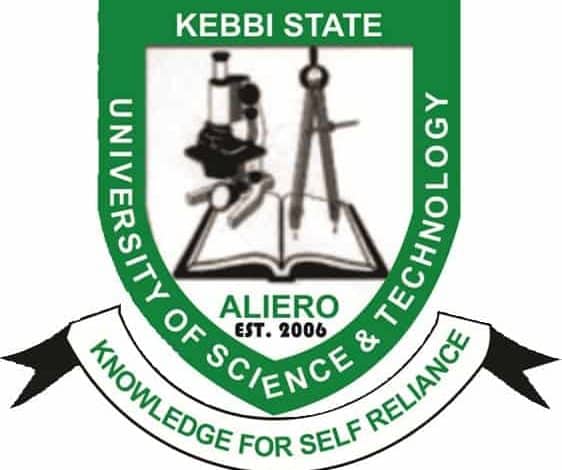In the dynamic world of education, gaining admission to a reputable institution is a significant milestone.
For prospective students eyeing a spot at the Kebbi State University of Science and Technology (KSUSTA), understanding the intricacies of the admission process is crucial.
One key element is the calculation of the Aggregate Score, a numerical representation derived from both the UTME and the school’s Post UTME results.

ALSO SEE:
KSUSTA Portal: Admission | Student | Screening
KSUSTA Cut Off Mark For All Courses
Kebbi State University Of Science And Technology Courses Offered
The KSUSTA Aggregate Score Formula
Unveiling the mystery behind the calculation, the KSUSTA Aggregate Score is determined by a straightforward formula:
Aggregate Score = (JAMB Score / 8) + (Post UTME Score / 2)
Let’s break it down with an example:
Consider a candidate with a JAMB score of 240 and a Post UTME score of 80. Their aggregate score would be:
Aggregate Score = (240 / 8) + (80 / 2) = 30 + 40 = 70
This numeric representation becomes a pivotal factor in the admission journey.
KSUSTA Cut-Off Mark
Aspirants often wonder about the benchmark they need to reach. The minimum aggregate score required for admission into KSUSTA varies by course.
However, there is a universal standard – the general cut-off mark for all courses is set at 140. This threshold becomes the gateway for hopeful students to step into the world of academia at KSUSTA.
Checking Your Eligibility
With technology at the forefront, checking your eligibility for admission into KSUSTA has never been more accessible.
The university provides an online admission portal where applicants can enter their JAMB and Post UTME scores.
The portal then works its magic, swiftly calculating the aggregate score and providing valuable insights into your eligibility status.
Navigating the Admission Portal
To embark on this digital journey, visit KSUSTA’s official website and locate the admissions portal. Once there, enter your JAMB and post-UTME scores into the designated fields.
The portal will process the information, and within moments, your aggregate score will be revealed. This transparency empowers candidates with the knowledge they need to plan their next steps confidently.
Additional Resources
For those seeking a deeper understanding of KSUSTA’s admission process, the university’s website is a goldmine of information. Additionally, reaching out to the admissions office can provide personalized assistance and clarify any lingering questions.
What is the cut off mark for all courses in Ksusta?
In the realm of higher education, Kebbi State University of Science and Technology (KSUSTA) stands as a beacon of academic excellence.
Aspiring minds often seek to unravel the intricacies of the admission process, and one key determinant is the coveted cut-off mark.
For the 2024/2025 admission screening exercise, KSUSTA has set the bar at 140, offering a pathway for eligible applicants to explore diverse degree courses.
The Universal Cut-Off Mark
KSUSTA’s commitment to academic standards is evident in the establishment of a universal cut-off mark.
To be eligible for admission into various courses, including sciences, engineering, and medicine, applicants must achieve a minimum score of 140 in both the Unified Tertiary Matriculation Examination (UTME) and the Post-UTME screening exercise.
This benchmark serves as the cornerstone for selecting candidates poised for success in their academic journey.
Understanding the Post-UTME Screening Exercise
The Post-UTME screening exercise is a crucial assessment conducted by KSUSTA to gauge the suitability of candidates for admission.
Typically held in July or August each year, this test plays a pivotal role in determining the academic prowess of applicants.
Scoring above the cut-off mark in both UTME and Post-UTME is a testament to a candidate’s preparedness for the challenges of higher education.
Supplementary Admission: A Second Chance
KSUSTA recognizes that not every promising candidate may meet the initial admission requirements.
As a testament to inclusivity, the university offers a lifeline in the form of supplementary admission.
Applicants falling below the cut-off mark have the opportunity to reapply, provided they have at least five credits in their O-Level result and a minimum UTME score of 140.
This second chance ensures that deserving candidates do not miss out on the chance to pursue their academic dreams.
About KSUSTA
Situated in Aliero, Kebbi State, Nigeria, KSUSTA has been a symbol of educational empowerment since its establishment in 2006.
Boasting a comprehensive range of undergraduate and postgraduate programs spanning science, engineering, technology, medicine, and humanities, the university has earned its place as a leader in the north-western region of Nigeria.
A Legacy of Excellence
KSUSTA’s commitment extends beyond admission thresholds.
With a dedication to research and innovation, the university molds graduates who are highly sought after by employers in Nigeria and globally.
The institution’s website serves as a gateway for those eager to explore the diverse programs offered and understand the intricacies of the admission process.
KSUSTA ADMISSION REQUIREMENT
Embarking on the academic journey at the Kebbi State University of Science and Technology (KSUSTA) is a significant step toward personal and professional growth.
To ensure the success of admitted students, KSUSTA has meticulously crafted admission requirements for both undergraduate and postgraduate programs.
This guide aims to unravel the specifics, providing a roadmap for aspiring students.
Undergraduate Admission Requirements
1. Age Criteria
To set the foundation for a successful academic experience, applicants must be at least 16 years of age at the time of admission.
2. O-Level Results
Possessing a Senior Secondary School Certificate (SSCE) or its equivalent is a fundamental requirement. Applicants must secure at least five credit passes in relevant subjects, with a focus on English Language and Mathematics.
3. UTME Score
Aspiring undergraduates need to attain a minimum score of 140 in the Unified Tertiary Matriculation Examination (UTME). This benchmark ensures a baseline academic proficiency.
4. Post-UTME Screening
The journey to admission includes passing KSUSTA’s Post-UTME screening exercise, comprising a written examination and an interview. Success in this phase further solidifies the applicant’s readiness for the academic challenges ahead.
5. JAMB Choice
Choosing KSUSTA as the first choice university in the UTME application is a prerequisite, emphasizing the applicant’s commitment to joining the KSUSTA community.
Postgraduate Admission Requirements
1. First Degree
Candidates aspiring for postgraduate studies must hold a Bachelor’s degree from a recognized university, showcasing a minimum cumulative grade point average (CGPA) of 3.5 or its equivalent.
2. P.G.D.E. or M.Phil. Requirement
For Master’s degree programs, candidates may be required to possess a Postgraduate Diploma in Education (P.G.D.E.) or a Master of Philosophy (M.Phil.) degree, adding depth to their academic background.
3. Transcripts and Certificates
Original academic transcripts and certificates from all previously attended institutions serve as a testament to the candidate’s educational journey.
4. Recommendation Letters
The submission of recommendation letters from two academic referees, typically professors or lecturers from previous institutions, enhances the application’s credibility.
5. Personal Statement
A compelling personal statement outlining the applicant’s academic background, research interests, and reasons for pursuing the chosen postgraduate program provides insights into the applicant’s aspirations.
6. Application Form
Completing and submitting the KSUSTA postgraduate application form online or in person within the specified deadline is the final step toward initiating the postgraduate academic journey.
Additional Considerations
- Specific departmental requirements may vary for certain programs.
- Candidates with professional qualifications or relevant work experience may be considered for admission, even if not meet all standard requirements.
- The university reserves the right to adjust admission requirements based on resource availability and program-specific demands.
Conclusion
In the quest for knowledge and personal growth, the Kebbi State University of Science and Technology stands as a beacon of opportunity.
Mastering the art of calculating the aggregate score and understanding the cut-off marks are pivotal steps toward securing admission.
As you embark on this academic journey, may your scores be high and your dreams even higher.
For more detailed insights, feel free to explore the wealth of information on KSUSTA’s official website or connect directly with the admissions office.
Your future at KSUSTA awaits, and the doors are wide open for those ready to step through.



